Dilated face veins have become a cosmetic concern for many people ever since. They occur predominantly in the frontal, temporal, and suborbital regions.
Face veins may dilate and become more prominent due to increased scalp drainages or physiological compression due to laughing, straining, insufficient hydration, or exposure to sun and physical activities.
Face veins are thin-walled and contain no valves. Contrary to leg veins, they do not require duplex investigation prior to planned treatment.
Laser treatment (Intense Pulsed Light) is usually successful for spider veins located on the nose, cheek, or chin; however, it may require more than one therapeutic application. Foam sclerotherapy is an extremely effective and safe procedure for frontal and temporal prominent and dilated veins.
Prominent frontal veins
Also known as supratrochlear veins, can be annoying and distressing, especially during activities of daily living. They usually come as two prominent and dilated superficial veins that run vertically down the forehead from the hairline to the base of the nose. However, the anatomy can be variable in some cases. Foam sclerotherapy is the treatment of choice for these veins and is a safe and effective procedure if done correctly. Large frontal veins may require a second injection. The use of lasers in the forehead is usually ineffective.
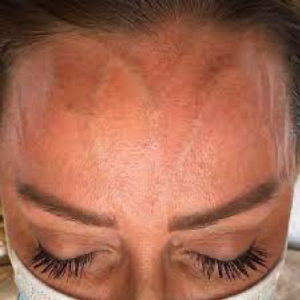
Temporal veins
Temporal veins are commonly present in the area called temple on the side of the forehead, lateral to orbit and medial to the ear. These veins run vertically down from the scalp to the undereye area. Sometimes, the temporal vein may be mistaken for a superficial temporal artery, which, contrary to the vein, is always colorless and pulseless and must be verified before injecting the vein.
Foam sclerotherapy is the modality of choice in temple veins, while small caliber veins or spider veins can be treated effectively using lasers.
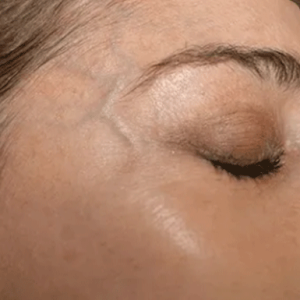
Suborbital veins or periocular veins
Suborbital veins or periocular veins are a plexus of enlarged veins around the eye that are difficult to assess and treat.
Treatment options for veins around the eye depend on size and location and may include sclerotherapy, Nd-YAG laser, or, less commonly, miniphlebectomy.
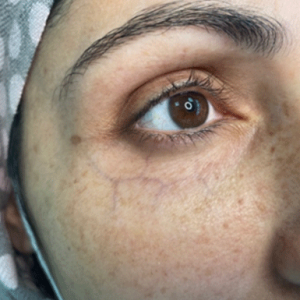
Facial telangiectasia (face spider veins)
Facial telangiectasia (face spider veins) is a common complaint of patients. These red veins are primarily located on the nose and cheeks and, to a lesser extent, on the chin. Either laser or sclerotherapy is a safe and effective treatment of choice.
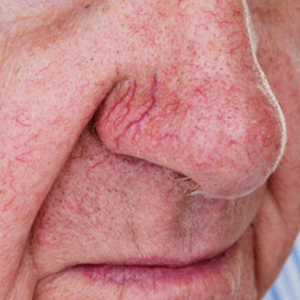
Venous lake
Venous lake is a common bluish lesion due to vascular dilatation, usually found on the lips and face. They are benign, persistent, and may occur in solitary or multiple forms. The cause is unknown, however excessive sun exposure may play a role as a risk factor. Occasionally, they may be mistaken for malignant melanoma.
Generally, no treatment is required unless the venous lakes cause pain or bleeding. The unsightly lesions may require treatment for cosmetic reasons. One treatment by Nd-YAG or Pulsed Dye laser is usually required, and scaring does not usually occur. Occasionally, more than one laser application may be required for more extensive lesions.
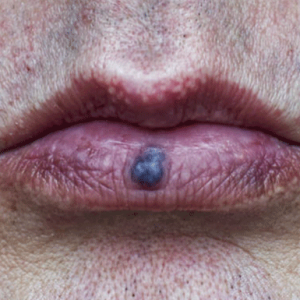
We treat all facial veins safely and effectively including:
- telangiectasia (spider veins)
- venules
- dilated and bulging veins
- venous lakes
For more information about the above treatments or to book your consultation with Dr. Marek Sepiolo, please call +971 52 482 6784 or email info@evclinic.ae

